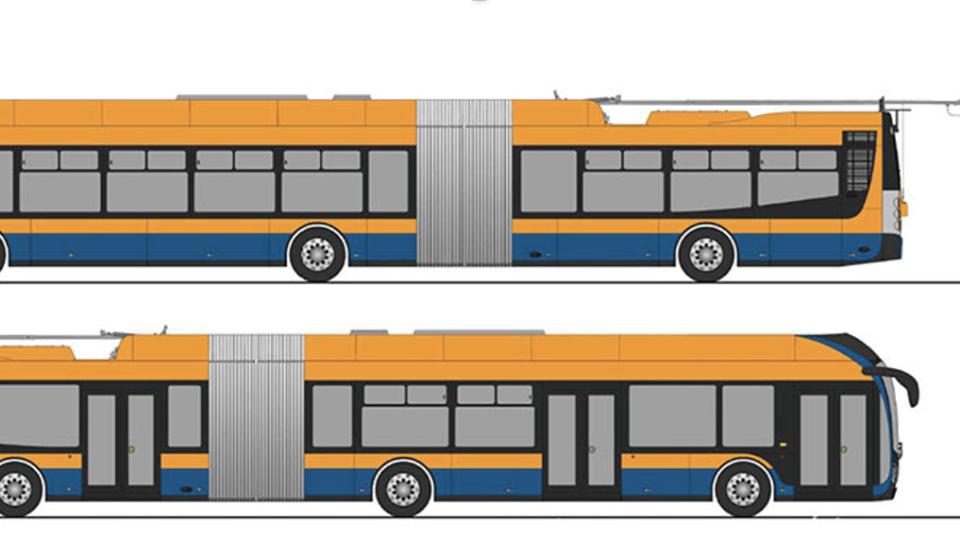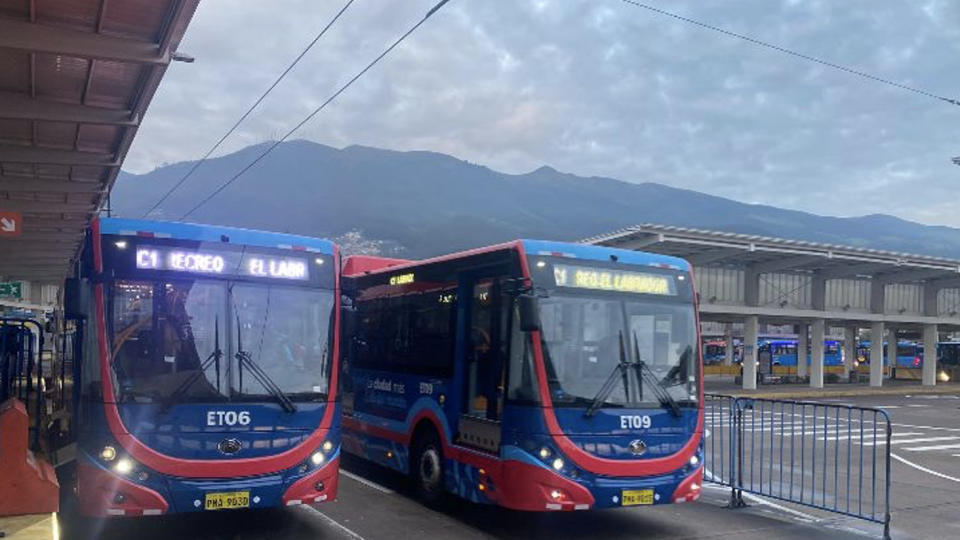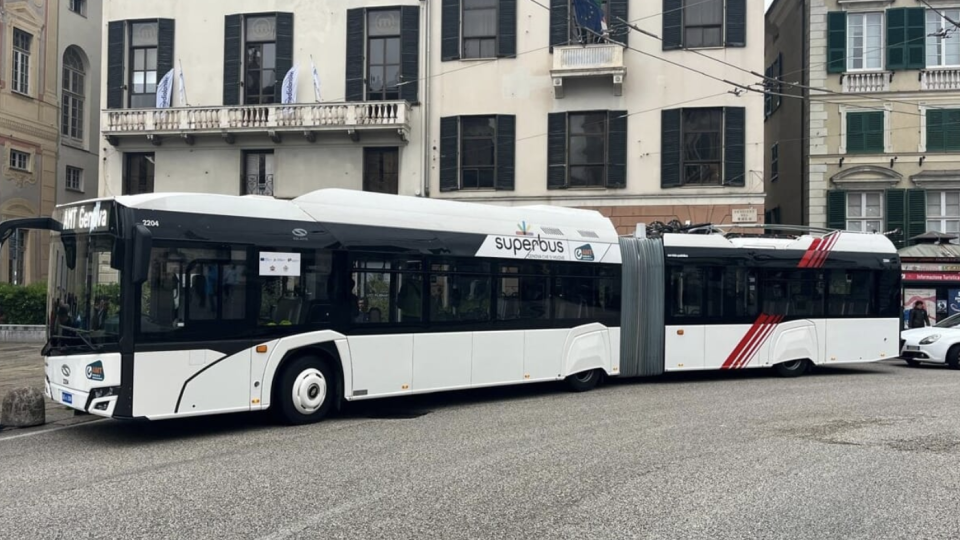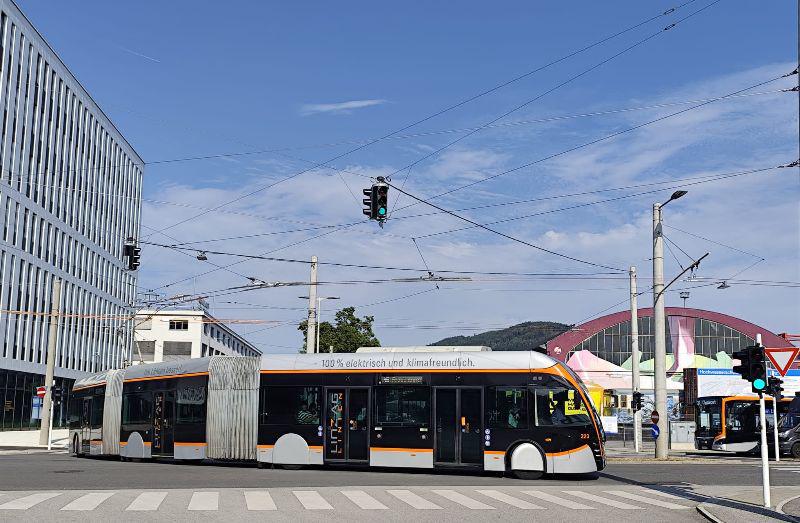Inaugurated in Cadiz the first tram train in Spain
Spain’s first tram-train is a reality, and Cadiz, an Andalusian city of 117,000 inhabitants, is awarded the first such service.On 26 October, the Bay of Cadiz tramway, also known as Trambahia, was opened for operation. The tramway will play a fundamental role in the sustainable mobility of the city’s metropolitan area, improving travel in the […]

Spain’s first tram-train is a reality, and Cadiz, an Andalusian city of 117,000 inhabitants, is awarded the first such service.
On 26 October, the Bay of Cadiz tramway, also known as Trambahia, was opened for operation. The tramway will play a fundamental role in the sustainable mobility of the city’s metropolitan area, improving travel in the densely populated area, increasing interchange possibilities, and achieving a significant reduction in travel time, rationalisation of energy consumption, and a definite reduction in polluting emissions and noise, thus improving the quality of life. It is the largest investment to date by the Andalusian regional government in transport and public infrastructure.
The inauguration ceremony was attended by the Spanish Government’s Minister of Transport, Mobility and Urban Agenda, Raquel Sánchez Jiménez, the President of the Regional Government of Andalusia, Juan Manuel Moreno Bonilla, the Regional Minister of Development, Spatial Planning and Housing, Marifrán Carazo, the president of Renfe (Spain’s main rail operator), Isaías Táboas, and the president of Adif, María Luisa Domínguez, as well as the mayors of Cadiz, José María González, Chiclana de la Frontera, José María Román, San Fernando, Patricia Cavada, and Puerto Real, Antonio Javier Romero.
President Moreno said that the tramway will reduce the private vehicle fleet by around 1,125,000 units, thus a reduction in CO2 emissions of 2,600 tonnes per year, equivalent to 7,400 new trees. The energy used will come from 100 % renewable sources. The goal is to reach 3 million transported users within 3 years. The construction of the infrastructure was troubled, taking 16 years, for a total investment of 267 million €, but it was worth it. Today Cadiz is connected to Chiclana in about one hour.
Significant attention has been paid to citizens, also on the economic side. Minister Sanchez, pointing out that Cadiz has become the pioneer of a new rail mobility, announced that the new service will be free of charge from day one and for the whole of 2023; to travel on the new line it will be enough to hold a Renfe season ticket for the Cércanias de Cadiz, the local rail service run by the Spanish operator. The operating costs will be borne by the Ministry and the Junta de Andalucia in proportion to their respective ownership of the infrastructure, which partly belongs to the State and partly to the Region.
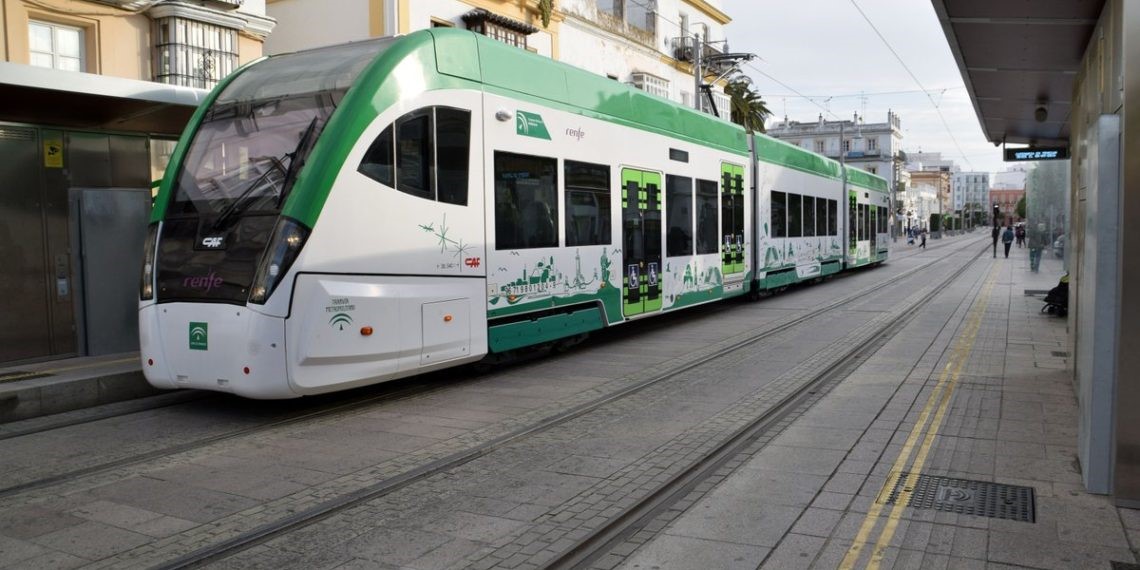
Renfe took care of the training of train drivers and will manage the commercial and operational aspects. The Minister also highlighted the role of ADIF (Administrator de Infraestructuras Ferroviaris), which has built the connections between the two networks, and recalled the Government’s commitment to mobility in Andalusia, with 2,300 mln. €2,300 million already invested. Renfe will also contribute € 14.4 million per year to the operation of the new line.
Along its route, the line, classified as T1, will serve a catchment area of 234,000 people living within 1,000 metres of a stop or station. The line is 24.3 km long, of which 10.4 km run on railway tracks, between the Rio Arillo station and Cadiz, and is operated by Renfe, Spain’s leading railway operator. From the Rio Arillo station, the tram separates to reach, after 15 stops, the Pelagatos terminus in Chiclana de la Frontera, in less than an hour. The newly built section is 14 km long, powered at 750 V, while the traditional national network line, broad gauge (1,668 cm), is powered at 3,000 V.
There are 21 stations, on average 1,000 m apart; of these, 6, including the terminus at Cadiz, are also used by the local railway ( Cercanias) C1, which connects Cadiz with Jerez de la Frontera and the Airport ( C -1) and with the University ( C -1a ), reached by a branch line from the les Aletas stop. The section between Rio Arillo and Cadiz is the responsibility of Renfe, with which Trambahia will share the service. The activation of the tramway has allowed for an increase in the number of trips between Cadiz and Rio Arillo, 18 more in each direction, practically halving the frequency, which is around 30 minutes, and even less, up to 10-15 minutes, at peak times.
At the Cadiz station, interchanges are available by road and rail, with regional and long-distance trains (Madrid can be reached in just over 4 hours).
The service timetable is very extensive, about 19 hours on Mondays to Fridays, with first departures at 5.20 a.m. from Pelagatos, ending at 0.30 a.m.; on public holidays and holidays, the first departure is at 6.21 a.m., with the evening service remaining unchanged.
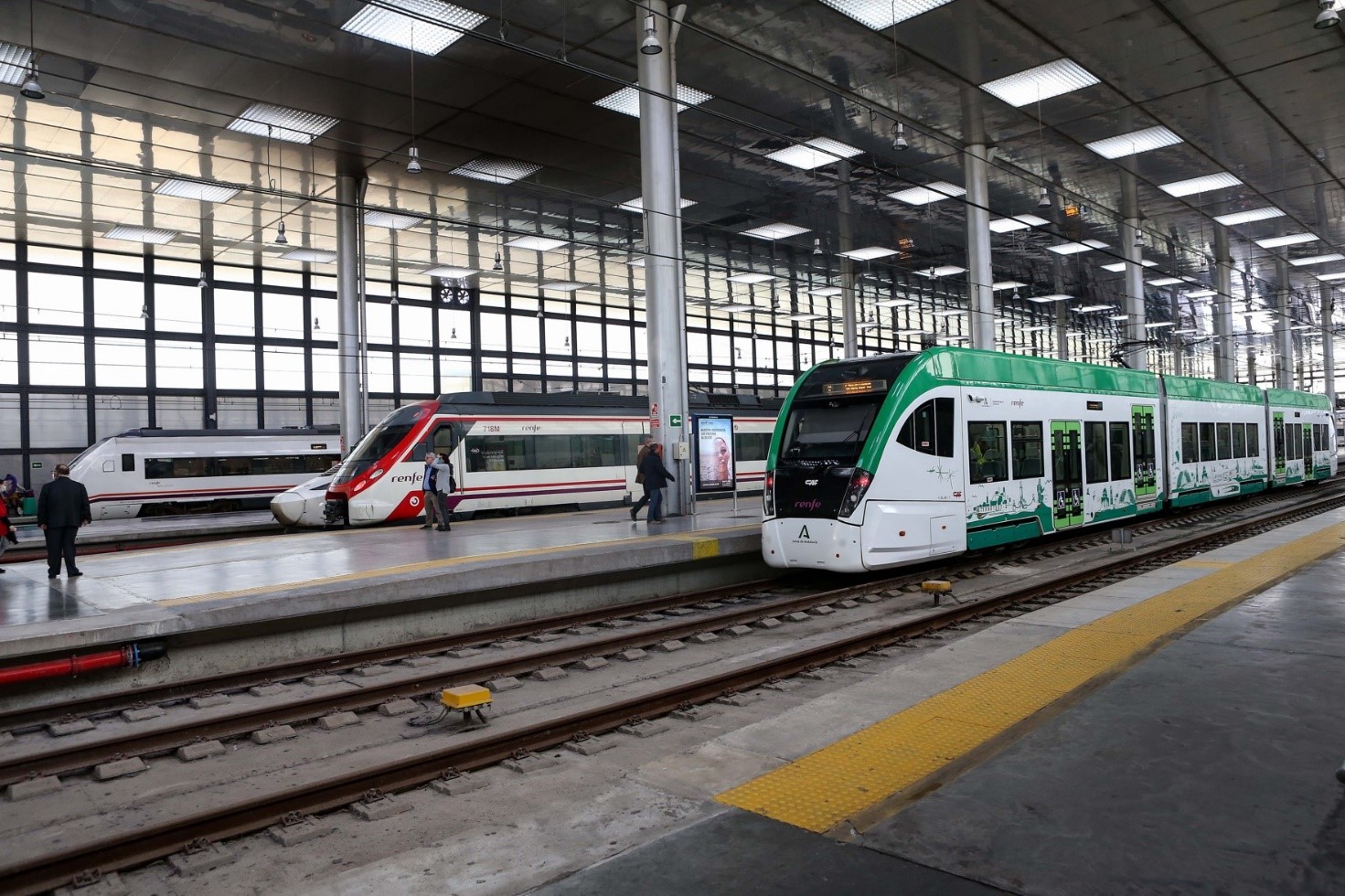
The rolling stock was built by CAF using the Urbos 7 model as a base. Numbered in the 801 series, a dual-current vehicle (750/3000 V, single pantograph) articulated on three bodies, two of which are motorised, it is 38 metres long, 2.6 metres wide, and can accommodate 246 passengers, 92 of whom are seated. The doors are arranged at two different heights, which is necessary to be able to circulate on the railway line, where the platforms are 76 cm high, and on the tramway, which is equipped with 38 cm high platforms. The track gauge is 1,668 cm, compatible with the Iberian railway network, and the maximum speed that the vehicles can reach is 100 km/h. The homologation obtained allows the trams to travel on any section of the Spanish railway network. There are currently 7 vehicles, 3 more of the same type have recently been ordered from CAF. For maintenance operations, a new depot-workshop was built in Pelagatos, occupying an area of a total of 27,000 m2.
The Trambahia is an example of how trams and urban railways can coexist and offer citizens a competitive and locally present service. Karlsruhe and Saarbrucken are important references, as is the T13 line in Paris. There is certainly room in Italy too for this interesting and always innovative solution of coexistence and integration between two modes of transport.
(Stefano Alfano)




